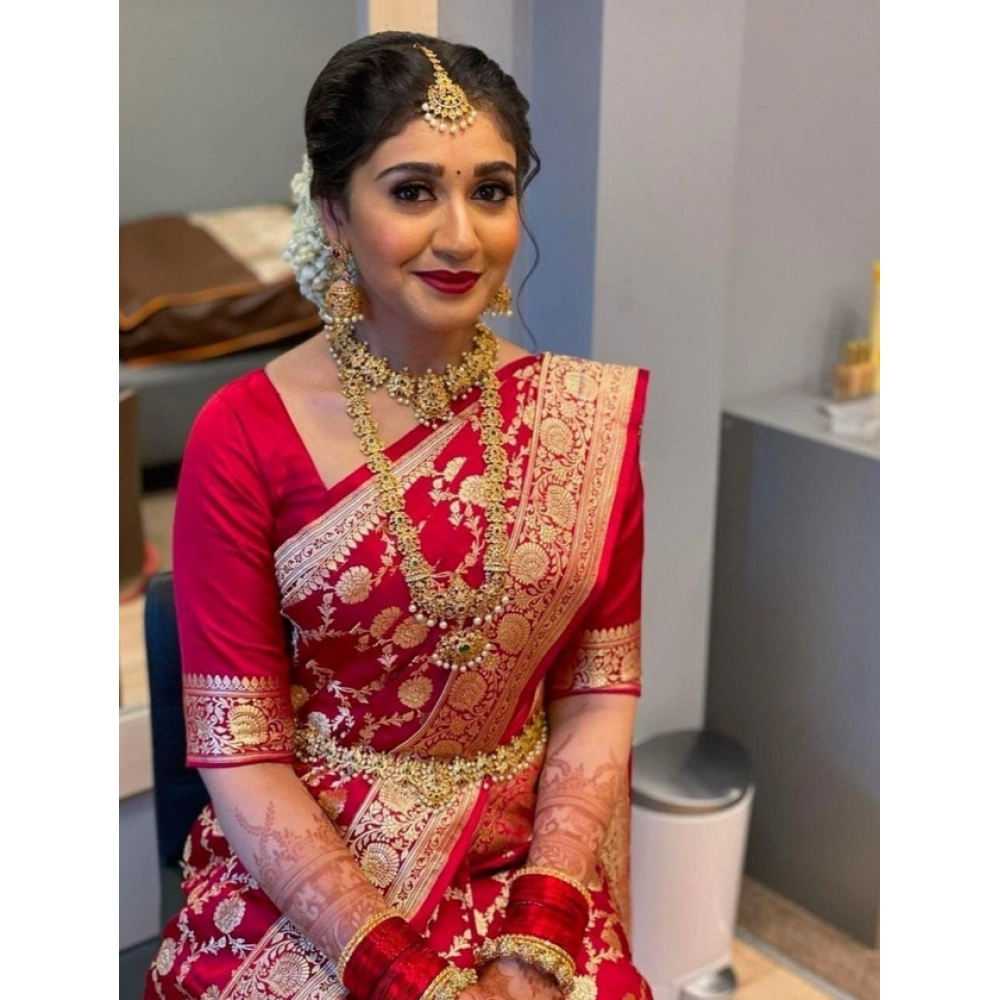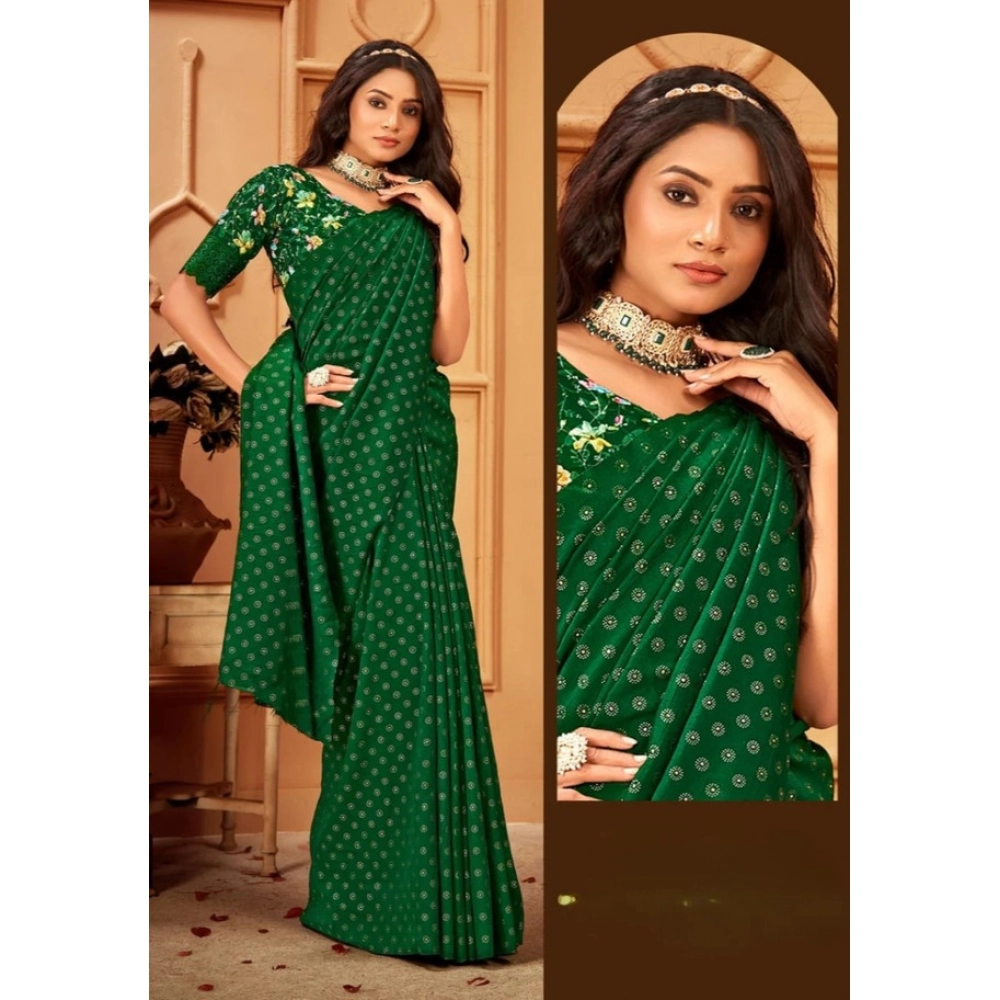Table of Contents
A six- to nine-yard piece of unstitched fabric, the Indian sarees are more than just a piece of apparel; it is a symbol of India’s rich cultural diversity and artistic talent. It has a profound sense of sophistication, versatility, and a classic quality. For centuries, Indian women have loved the saree, which has evolved exquisitely from casual wear to glamorous red carpet fashion. Every weave speaks to the spirit of a place, every pleat tells a story, and every drape reveals a legacy.
Examining the fascinating world of sarees from various Indian states, this blog highlights their distinctive qualities, the craftspeople who make them, and how they are constantly changing to fit current fashion trends.s
A Diverse Tradition: Indian Sarees in Different Areas
Banarasi sarees, which are made in the holy city of Varanasi, are renowned for their exquisite silk, elaborate zari (gold and silver brocade), and intricate Mughal-inspired patterns with jhallar (lace-like borders), bel (creepers), and floral patterns. Banarasi sarees were first worn by royalty and are still a popular option for brides today.
An Interesting Realisation: Depending on how intricate it is, weaving a single genuine Banarasi saree can take anywhere from 15 days to 6 months.
A staple of South Indian weddings, the Kanjeevaram saree is made from pure mulberry silk and is renowned for its vibrant colours and longevity. Temple themes, mythological stories, or zari-worked peacocks are commonly featured on the border and pallu.
**Interesting Factor:** Usually woven separately, the body and border of a Kanjeevaram saree are meticulously stitched together using a zigzag interlocking technique.
Maharashtra- Paithani Saree
Traditionally worn by the nobles of Paithan, Paithani sarees are handwoven silk garments with beautiful zari embroidery. The pallu’s famous lotus or peacock motifs go well with their distinctive oblique square patterns.
One unique feature is: Every Paithani saree is a painstakingly created masterpiece that takes months to complete and keeps its brilliant colours for many years.
Madhya Pradesh- Chanderi Saree


Made from a blend of cotton and silk, Chanderi sarees are breathable and light, making them ideal for summertime wear. They usually display geometric patterns, floral designs, and buttis (small motifs).
**Do You Know? ** Chanderi weaving originated during the Vedic era, when priests and other aristocrats used and revered the fabric.
Gujarat and Rajasthani- Bandhani Sarees
The fabric is tied in tiny knots before the dyeing process to create Bandhani or Bandhej sarees. The result is a beautiful pattern of dots that forms different shapes like squares, circles, or waves.
**Link to Culture:** Particularly among the Gujarati and Marwari communities, bandhani sarees are usually worn at important occasions like festivals and weddings.
Odisha's- Sambalpuri Saree
Originating from the tribal areas of Odisha, Sambalpuri sarees are handwoven with ikat patterns and dyed threads before weaving. Earthy hues and symbolic designs like flowers, wheels, and shells are common in these Indian sarees.
**Art:** Sambalpuri sarees are known for their expert ikat technique, which has earned GI (Geographical Indication) status.
Muga and Eri Silk Sarees from Assam
The unique silk varieties used in Assamese sarees—Eri, which feels soft and woollike, and Muga, which has a golden sheen—are well-known. Because of their durability and natural golden sheen, Muga silk sarees are highly prized.
The Embrace of Nature: Muga silk, which is completely organic and environmentally friendly, is only made in Assam.
Kerala- Kasavu Saree
Usually having a white or cream base with a golden zari border, the Kasavu saree epitomises elegance and simplicity. It symbolises Kerala’s subtle elegance and is worn by brides and at festivals like Onam.
Fashion Tips: For a completely traditional look, kasavu sarees are usually accessorised with jasmine flowers and gold jewellery.
Telangana Pochampally- Saree
Pochampally sarees, which combine elegance and vivid colours, are renowned for their eye-catching geometric ikat designs. These pieces combine traditional weaving techniques with modern designs, and they are made from silk or cotton-silk blends.
Cultural Significance: Pochampally is one of the few towns in India where over 10,000 families work in the weaving sector.
Odisha's- Bomkai Saree
Bomkai, also called the Sonepuri saree, is a stunning blend of ikat and embroidery techniques. These sarees, with their tribal motifs and striking colour combinations, have a rustic charm.
The spirit of classics: In Odisha, temple priests and people attending cultural festivals usually wear bomkai sarees.
Up-to-Date Saree Fashion Trends: Classic and Contemporary Indian Sarees
Sarees are deeply rooted in tradition, but how they are worn and styled has changed dramatically in recent years. The Indain saree is being revived with a modern twist by the current generation that sets trends.
Ready-to-wear Indian sarees that are already stitched
Pre-draped sarees that are easily styled like skirts have become popular due to fast-paced lifestyles. These are perfect for people who enjoy the style of a saree but find the draping a little difficult.
Saree with Shirts or Crop Tops
Stylish crop tops, off-the-shoulder designs, or even stealing from men’s shirts are replacing traditional blouses among young ladies. This combination of styles adds a striking, contemporary touch.
Belted Indian sarees
Wearing a belt with the saree adds a stylish Indo-Western touch while elegantly highlighting the waist. From metallic belts to intricately embroidered kamarbandhs, the options are endless.
Combining Capes and Jackets
It’s getting more and more popular to wear a saree with a long jacket or a cape-style blouse, especially for formal events like winter weddings.
Creative Draping Methods
Beyond traditional Nivi draping, fashionistas are experimenting with drapes in the styles of dhotis, pants, and lehengas. These developments offer a combination of simplicity and creative expression.
Indian Saree: A Sustainable and Inspiring Choice
Sarees represent a classic and environmentally responsible approach to fashion in a culture that seeks out fleeting trends. They are cherished as heirlooms, passed down through the generations, and creatively repurposed. A granddaughter can make a grandma’s saree into a chic dress or a lovely dupatta. It is infinitely versatile. Indain Sarees also empower innumerable weavers and craftspeople across India, preserving traditional skills and supporting rural economies.
Conclusion – The Indian Saree's Timeless Allure
The saree is more than just an article of apparel; it tells a story about culture and custom. It narrates a region’s history, displays its inventiveness, and changes naturally over time. Every saree, from the grand Kanjeevaram to the colourful Bandhani and the modest Kasavu, has a unique personality.
In India today, sarees are worn for occasions other than weddings and festivals. They are worn by women in the workplace, on college campuses, and even on international fashion runways. They stand for fortitude, uniqueness, and honour.
Allow the saree to express your personal style, whether you decide to wear it traditionally or with your own special touch. Nothing in the world of fashion can match the beauty and grace of a saree.
Would you like to Indian share a saree story?
Tell us in the comments below which regional saree you adore or your favourite way to style a saree.
